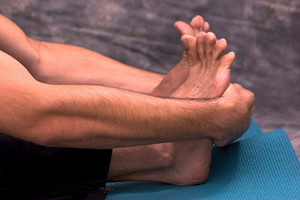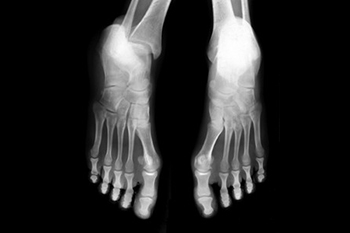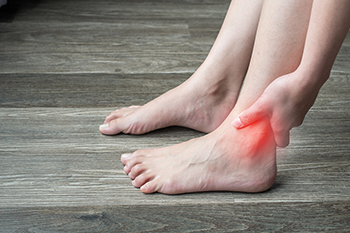Items filtered by date: July 2023
Foot Protection in Cold and Wet Winter Months

There are several areas that are extremely cold and wet during the winter months. It is important to keep the toes as warm as possible, and this may be difficult to do. One of the first things to do is to purchase boots that are weatherproof. They should also be breathable, which will allow foot perspiration to escape. Additionally, it is helpful to wear boots that are insulated, and many of them are rated for the type of weather they will be worn in. The right socks to wear during these cold months are generally made from fleece, wool, and similar fabrics. Many people are used to wearing cotton socks, which may not be a good choice, as they can make the feet feel colder. In areas of intense cold, a snow gaiter may be worn. This is wrapped around the lower leg, and can help to prevent the snow from entering the boot. It is crucial to keep the feet dry, because they will have a better chance of staying warm, possibly preventing unwanted foot conditions from developing. If you would like to know more about proper foot care in winter months, it is suggested that you speak with a chiropodist who can provide you with useful information.
The winter months can bring about new or worsening foot and ankle problems. If you’re suffering from foot or ankle pain, please consult with Chiropodist Stephanie Poupore from North Bay Foot & Ankle. Our clinician can help you maintain the health of your lower limbs and your mobility.
Winter Foot Problems
-
Cracked heels - Dry, cracked skin on the heels of the feet that is associated with cold, dry weather
-
Athlete’s foot - A fungal infection on the skin of the feet
-
Blisters - Fluid-filled bubbles of skin that usually form in response to friction
-
Fractures - Broken bones in the feet or ankles
-
Metatarsalgia - General foot pain
-
Chilblains - Spasming of the small blood vessels in the toes in response to exposure to cold weather
-
Raynaud’s disease - Numbness, pain, and color changes in the toes due to cold weather
Prevention
-
Wear warm socks and shoes
-
Avoid prolonged exposure to the cold
-
Moisturize the heels regularly
-
Keep your feet clean and dry
-
Walk carefully in areas that may be icy
-
Wear non-slip shoes
If you have any questions, please feel free to contact our office located in . We offer the newest diagnostic and treatment technologies for all your foot care needs.
How to Stretch the Feet

Did you know that stretching your feet is as necessary as stretching other parts of your body? It feels good and is a helpful way to keep the feet in good working order, especially as we age. As aging occurs, we can lose mobility and flexibility in our feet, which can cause issues with balance. Tight muscles may interfere with bending our feet fully while walking, and this can also lead to balance issues, as well as a shortened gait. If your feet are stiff, it can affect the rest of your body, including the alignment of the knees and hips. It is ideal to do foot stretches daily. Toe stretches can be done by standing by a wall and running your toes up the wall while keeping the ball of the foot on the floor. The knee can be bent, bringing it closer to the wall, to deepen the stretch, if so desired. You can also reach one foot behind you and press the tops of the toes into the floor so that the toes are pointed. Your toe muscles can be stretched by spreading a handful of marbles on the floor and trying to pick them up with your toes followed by putting them into a container. The whole foot can be stretched and massaged by rolling it on a tennis ball. If you would like to learn more about stretching your feet, it is suggested that you visit a chiropodist who can provide you with additional information, as well as treatment of any existing foot and ankle problems.
Stretching the feet can improve their flexibility and overall strength, and can help prevent or reduce the impact of foot injuries. For more information about stretching your feet, please consult with Chiropodist Stephanie Poupore from North Bay Foot & Ankle. Our clinician will assess your condition and provide you with quality foot and ankle treatment.
Why Stretching the Feet Is Important
Your feet support the weight of your entire body as you go about your daily activities. As with any other part of your body, stretching and exercising the feet can help maintain their overall health, reduce foot pain, and prevent future injuries.
How to Stretch
There are a variety of foot stretches and exercises that you may try. It is recommended that you speak with a chiropodist to learn which exercises are best for you.
Some examples include:
-
Heel Raises - Hold onto a wall for balance as you slowly rise up on your tiptoes. Hold the position for several seconds, then lower your feet back to the ground. Repeat 10 times.
-
Toe Splay - Sit in a chair with your feet flat on the ground. Spread your toes as far apart as you can, holding for several seconds. Repeat 10 times.
-
Towel Scrunches - Sit in a chair and lay a towel flat on the floor in front of you, placing your foot on top of it. Using only your toes, scrunch up the towel pulling it towards you. Repeat several times with each foot.
-
Plantar Fascia Massage - Sit in a chair and place a round or cylindrical object (such as a tennis ball, water bottle, or foam roller) under the arch of your foot. Slowly push your foot forward and backward while applying pressure to the object. Maintain the object between your heel and toes. Do this for about 30 seconds. Repeat on the other foot.
If you have any questions, please feel free to contact our office located in . We offer the newest diagnostic and treatment technologies for all your foot care needs.
Are Bunions Affecting Your Everyday Life?
Bones in the Feet

The human body can be considered to be a work of art. There are intricacies in all areas of the body, and the feet are no exception. Each foot has 26 bones, 33 joints, and numerous ligaments and muscles. They all work together to provide balance and a foundation for the body. Seven bones are located in the back of the foot, and these are referred to as the tarsal bones. One of these is the heel bone, which plays an important role in supporting the weight of the body. The bones in the toes are known as the phalanges, and there are two or three bones in each one. The middle of the foot houses the metatarsal bones and connects to the tarsal bones and phalanges. The bones in the feet may be affected by certain foot conditions. These can include arthritis in the big toe, bunions, hammertoe, and gout. If you would like to learn more about foot biomechanics, it is suggested that you confer with a chiropodist who can provide you with useful information.
The biomechanics of your feet play an important role in your foot health. To learn more, please consult with Chiropodist Stephanie Poupore from North Bay Foot & Ankle. Our clinician can help you maintain the health of your lower limbs and your mobility.
Foot biomechanics refers to the study of the structure, function, and motion of the feet. The feet and ankles are a complex system consisting of many bones, joints, ligaments, muscles, and tendons that work together to move your feet. Understanding the unique biomechanics of your own feet can help you and your chiropodist make informed decisions about your foot health care. This includes decisions about the best preventive measures to avoid foot pain, the best treatment options for various foot problems, and finding the best shoes for your feet.
If you have any questions, please feel free to contact our office located in . We offer the newest diagnostic and treatment technologies for all your foot care needs.
Causes and Symptoms of Ankle Pain

The ankle joint enables the foot to move up and down. There are various reasons to have ankle pain, which can range from enduring an injury to having an abnormal foot structure. A fall is a common reason to have ankle pain, and it can produce symptoms such as swelling, bruising, pain, and difficulty in walking. There may be existing medical conditions that can cause ankle pain. These can include gout, osteoarthritis, and nerve damage, which is known as neuropathy. A fracture can also lead to ankle pain, and a diagnosis can be performed which can determine its severity, or classify it as a sprained ankle. Many people who have ankle pain can find temporary relief when the affected foot is wrapped in an elastic bandage. This is often successful in providing necessary stability as it heals. If you have ankle pain, it is suggested that you consult with a chiropodist who can diagnose the cause and guide you toward treatment options.
Ankle pain is a common symptom of many lower limb problems. If you are experiencing ankle pain, please consult with Chiropodist Stephanie Poupore from North Bay Foot & Ankle. Our clinician will assess your condition and provide you with quality foot and ankle treatment.
The ankle is composed of a number of muscles, bones, tendons, and ligaments. There are many conditions which may cause ankle pain.
Causes
-
Ankle strains or sprains
-
Achilles tendon injuries
-
Fractures
-
Bursitis
-
Arthritis
-
Gout
-
Tarsal tunnel syndrome
Symptoms
If you have ankle pain, you may also experience a variety of other symptoms depending on the underlying cause of the pain. Some of these symptoms may include ankle swelling, bruising, redness, numbness or tingling, instability, and difficulty walking.
Diagnosis
The underlying cause of ankle pain can be diagnosed by a chiropodist. Diagnoses are typically made based on your medical history, a physical examination of the affected ankle, and imaging studies such as X-rays.
Treatment
Treatment for your ankle pain will depend on its underlying cause. Often, the chiropodist will recommend that you rest the affected ankle. You might also need to ice, compress, and elevate the ankle, wear an orthotic device, or take medications to reduce pain and inflammation.
If you have any questions, please feel free to contact our office located in . We offer the newest diagnostic and treatment technologies for all your foot care needs.

